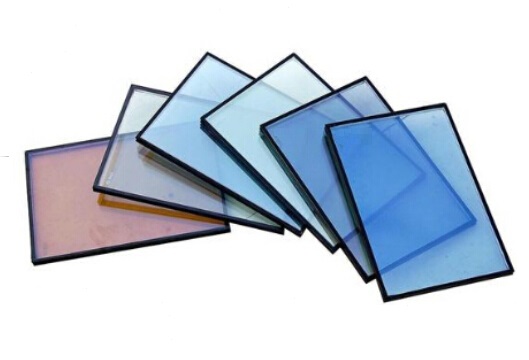

What are the main categories of coated glass?
Coated glass is divided into two categories: sunlight controlled coated glass and low emissivity coated glass.
Sunlight control glass, also known as heat reflective coated glass, has a film layer composed of metals such as stainless steel, chromium, nickel, titanium, and their oxides or nitrides. It does not have low radiation characteristics and can reflect visible light and some infrared rays in sunlight. It has a certain shading effect, but the visible light transmittance is very low. Due to the rich and colorful appearance of sunlight controlled coated glass, it is currently mostly used for building exterior decoration and has been basically replaced by Low-E glass in the field of energy-saving doors, windows, curtain walls, and glass.
Low radiation coated glass (Low-E glass) uses metal materials with low radiation performance, such as gold or silver. Considering the manufacturing cost, Low-E glass is basically made of silver coating and is currently the mainstream product for energy-saving glass.
What are the characteristics of Low-E glass?
Simply put, Low-E glass has the following characteristics, which will be introduced in detail later:
(1) Low heat transfer coefficient K value, strong ability to resist temperature difference heat transfer, beneficial for energy conservation in both winter and summer;
(2) The shading coefficient Sc has a wide range and can meet the shading needs of different regions;
(3) Good comfort performance, can prevent eye exposure and balance indoor temperature;
(4) Offline Low-E film cannot be used as a single piece, except for online Low-E film and silver free Low-E film.
How low is the emissivity considered Low-E glass?
In physics, all objects with a radiation rate below 0.15 are classified as low radiation objects. Therefore, it appears that the radiation rate of Low-E glass should be below 0.15. In reality, the radiation rate of offline Low-E glass is all below 0.15, and double silver and triple silver Low-E glass can even be as low as 0.03. However, the emissivity of online Low-E glass is higher than 0.15, approximately between 0.18 and 0.22. Strictly speaking, it does not belong to low emissivity objects and is therefore referred to as K glass abroad. Despite this, the emissivity of online Low-E glass is still much lower than that of ordinary glass, which is 0.84. Therefore, it is also included in the low emissivity glass series and called "Low-E glass".
How is Low-E film divided in terms of functional use?
In the standard "Coated Glass", Low-E film is divided into traditional type and sunshade type according to its usage function.
Any shading coefficient Sc>0.5 belongs to the traditional type, and any shading coefficient Sc ≤ 0.5 belongs to the shading type. This division is mainly to meet the energy-saving requirements of different climate regions. Traditional Low-E glass pursues a higher shading coefficient, which is necessary for climate areas that only require heating in winter and do not require cooling in summer, especially for residential buildings in cold regions of China; Sunshade type Low-E glass can effectively limit the heat energy in sunlight and is suitable for residential buildings in other climate regions and public buildings in almost all climate regions, especially glass curtain wall buildings.
What are the effects of Low-E glass on indoor plants?
Low-E glass can transmit visible light and partially ultraviolet light, without affecting the photosynthesis of plants. Therefore, it has no adverse effects on the vast majority of ordinary plants, but has a certain impact on plants that rely on ultraviolet light for growth, such as deep purple flowering plants. The impact on special rare plants can be consulted with experts in the field of plants and flowers.



